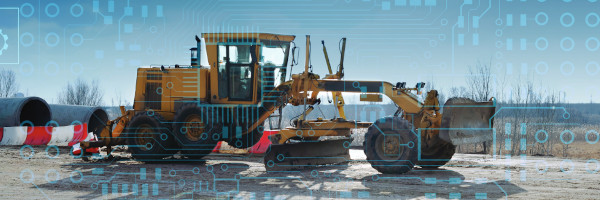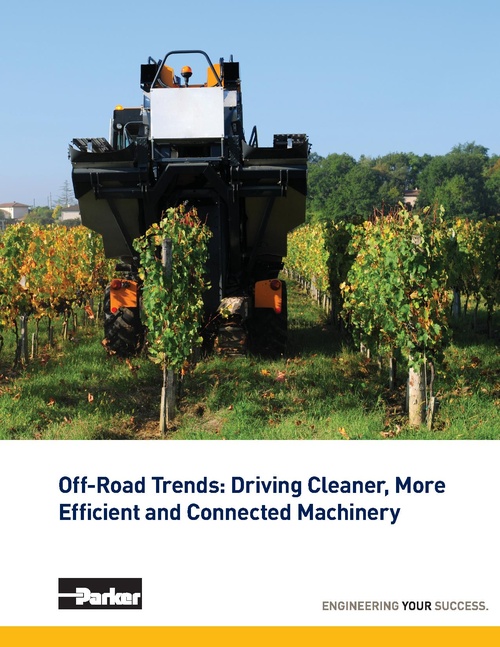Efficient and Connected Off-Road Machinery: Difference between revisions
Created page with "{{News |Image=Off-RoadEquip200.jpg |Published=2021-01-01 |Organization=Parker |Where=Cleveland OH |Summary=This white paper explores both global and U.S. market trends that ar..." |
No edit summary |
||
| Line 7: | Line 7: | ||
|Link=https://www.parker.com/parkerimages/Parker.com/Images/Industries/Off-Road%20Trends-%20Driving%20Cleaner,%20More%20Efficient%20Connected%20Machinery.pdf | |Link=https://www.parker.com/parkerimages/Parker.com/Images/Industries/Off-Road%20Trends-%20Driving%20Cleaner,%20More%20Efficient%20Connected%20Machinery.pdf | ||
|Display=Yes | |Display=Yes | ||
|chapter=Electric and Hybrid Vehicles | |||
|Release=Off-Road Trends- Driving Cleaner, More Efficient Connected Machinery.pdf | |||
|Tag=E-Worksite | |Tag=E-Worksite | ||
}} | }} | ||
Many of today’s construction equipment trends are the result of '''advancements in digital technology''', some of which reduce skilled labor requirements: | Many of today’s construction equipment trends are the result of '''advancements in digital technology''', some of which reduce skilled labor requirements: | ||
Latest revision as of 04:57, January 17, 2023
| News | |
| Image | 
|
|---|---|
| Published | 2021-01-01 |
| Point(s) of Contact | |
| Organization(s) | Parker |
| Where | Cleveland OH |
| Display | Yes |

| |
This white paper explores both global and U.S. market trends that are driving new thinking, designs and technologies in Off-Road machinery.
Many of today’s construction equipment trends are the result of advancements in digital technology, some of which reduce skilled labor requirements:
- Autonomous heavy equipment is now used to excavate, grade and perform a growing amount of work on construction sites.
- Autonomous drones and rovers use cameras and LiDAR to perform scans of a job site; then use artificial intelligence to determine daily progress against the schedule and to identify any errors.
- Specialized robots under human supervision can perform repetitive construction tasks such as bricklaying, painting, loading and tying rebar, with the ability to work nonstop.
- The Internet of Things (IoT) enables a digitally integrated construction process and job site. It includes smart construction machines with sensors that collect and transmit data to each other and with their home base.
- Predictive telematics and analytics send machine diagnostics alerts and other vital information to fleet managers and equipment owners for off-site management.
Growing demand for machine electrification in construction and other types of equipment continues to drive global development of new battery technologies.
- OEMs are converting equipment from lead-acid to lithium batteries, which are 20%-30% more efficient.
- Battery chargers are moving toward integration into the equipment they power.
- One leading manufacturer recently introduced the first fully electric backhoe loader at CONEXPO 2020. This
machine is powered by a 480V, 90kWh lithium-ion battery pack, capable of working a typical 8-hour day on a single charge. The global market for compact construction equipment is forecast to grow from more than $10 billion in 2017 to more than $15 billion in 2025. The electrification of these machines is easier than on large construction equipment and is a growing trend. One global OEM has announced that it will stop producing its diesel-powered versions, converting to an all-electric product line. The company is promoting them as small, quiet, zero-emissions machines for use in cities and densely populated areas.